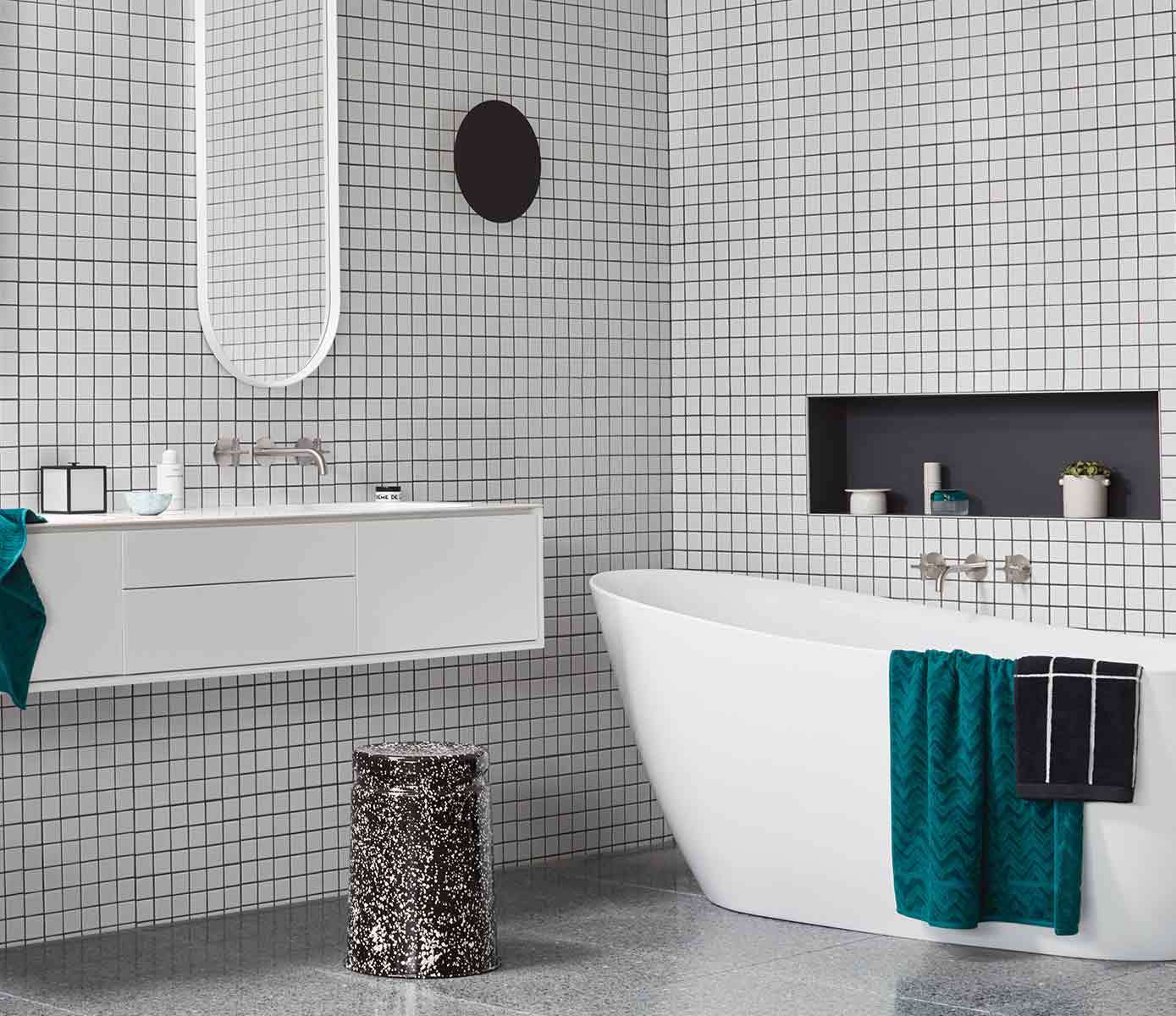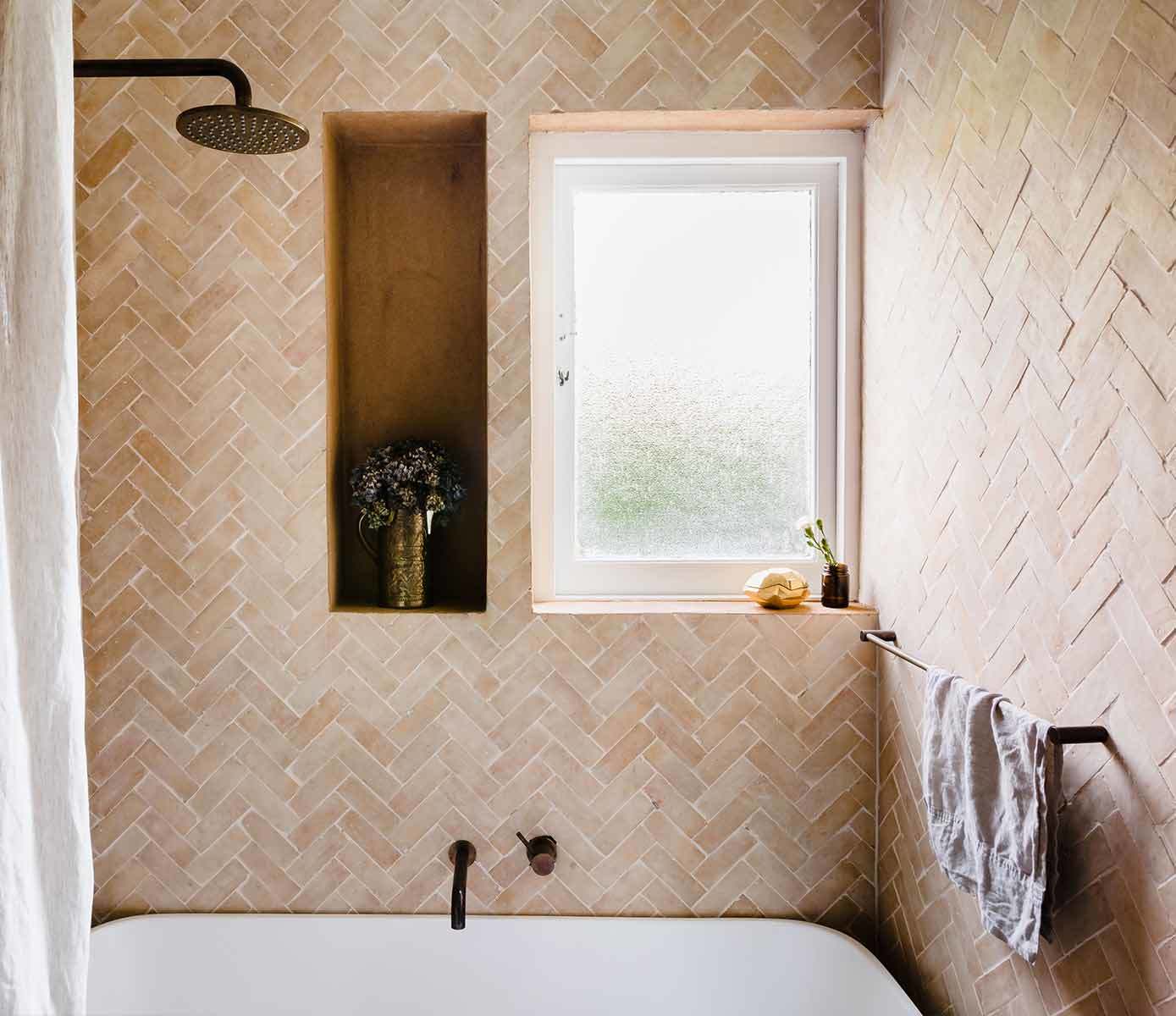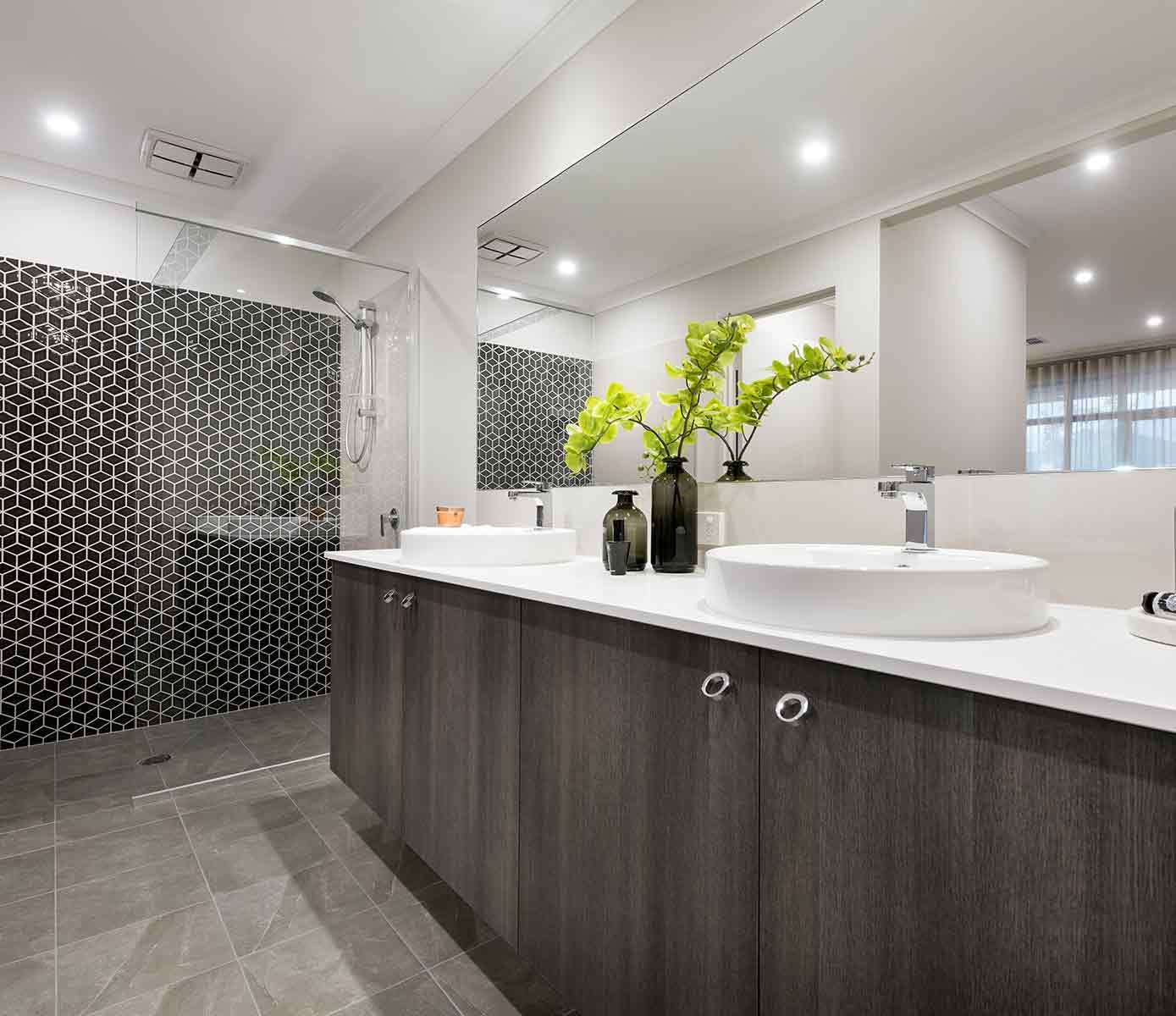How to Choose the Right Tile Combinations in the Bathroom
Whether you’re renovating or about to embark on a start-to-finish bathroom build, the tiles you choose can have a major impact on the final result. To help you navigate the options and make the right decisions for your home, we spoke to the founder of Tiles of Ezra and director of interior architecture firm GABBE, Georgia Ezra.
What are the main things to consider when selecting tiles for the bathroom?
"What you see at eye level when you walk into a bathroom is really important. I recommend bringing the tiling full height to the ceiling to open up the space. Also vital, and commonly misjudged, are the endpoints of the tiling. If you're not tiling floor-to-ceiling or wall-to-wall, and instead just creating a feature wall, you need to define the endpoints clearly. Ask yourself, ‘why is there an endpoint and does it line up with the joinery?’. It's important to properly plan for these points to ensure the space will make sense visually.”
What should you avoid when choosing tile combinations?
“No matter what room you're designing, it should be treated as a story with all elements perfectly tying together. Go ahead and play with intricate patterns and bold colours – I personally love to do this – but you should ensure it all makes sense as a whole. For example, if you're choosing a bold or bright colour, try sticking to one pattern or select one tone but create interesting layering through various textures. Ultimately, you don't want your space to look too busy and lose its impact.”
Which tiles that are better for higher traffic bathrooms?
"In terms of durability, you’ll find that porcelain and ceramic tiles are a common choice, as they’re thinner which is sometimes easier to lay and can be considered more practical as they don’t need sealing. But, do they offer the same warmth, texture and passion as handmade tiles? No. Something like a Zellige mosaic tile is another durable option, and also offers a unique warmth and texture. Cement tiles require the most upkeep, as they’re more porous and need regular sealing – but still very durable.”
What are some quick tips to tile within a tighter budget?
"Instead of opting for floor-to-ceiling tiling throughout the entire bathroom, think about one block, such as the shower area or just the floor. Not only will this save some money, but it can allow the tiling to become the hero of the bathroom. For something different, consider how you can wrap the tiling around certain bathroom products, and how high to take that tiling to create impact.”
What colour and size tiles work best for small bathrooms?
“Two choices: opt for large format tiles to make the bathroom look bigger, or go with really small penny roll tiles for some intricate detailing. I don’t think there is any particular shape that’s ‘best’ for a small bathroom, but wrapping the floor tile right to the ceiling is an absolute must if you’re trying to make the space feel bigger. And in terms of colour, lighter tones always help to create the feeling of a larger space.”


